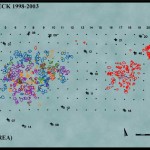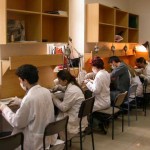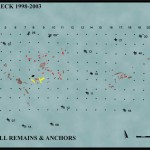Sea of Marmara Underwater Discoveries Underwater Archaeology

2002,2003 field seasons
The summer 2002 and 2003 was consecrated to raise thirty anchors related with the shipwreck, the rest of the cargo and to delimit the contour of the deposit of the amphoras.
We can now say with some confidence that:
. The ship was a wine-merchant vessel of Byzantine origin, setting sail in the beginning of 13th century during Latin invasion of the Byzantine Period.
Most likely that the sinking ship had broken into two major pieces had an overall length of around twenty-five meters.
. We estimate that the ship was carrying around 800 amphorasof average 70 kg. each, than the approximate weight of the entire cargo of amphoras was between fifty and sixty metric tons. This suggests that our ship had an overall capacity of perhaps 100 tons.
. The vessel also carried scrap iron anchors. Since much of the iron in the anchors is still in an unoxidized state and the concretion around the iron is often extremely thin, it would be extremely difficult to make casts of these anchors and it would take long time to complete the task. Research on anchor remains is now turned to a Ph.D. thesis by our team member, Ufuk Kocabas, X-ray process to make accurate 3 – dimensional measurements and record all structural features, particularly welds, of the anchors were made in the Nuclear Research Center of Cekmece in Istanbul.
. The quality of tableware found in the vessel leads us to believe that the captain and the passengers led on affluent life. The fact that the daily kitchen ware and roof tiles were found concentrated in one area indicates the presence of a kitchen/galley located at the stern. Daily kitchen ware found in the bow indicates another area designated for the crew.
. Absence of carpentery tools and defence weapons leads us to believe that our ship was making a small-distance journey.
. Much of the hull and perhaps some organic cargo was consumed by marine organisms.
. Anchors and hull remains were delivered to Istanbul University’s Conservation laboratory.
. Daily ceramics were delivered to Bandirma Archeological Museum where the desalination process, by which salt from seawater is removed from the fabric of the artifact, continues. Bandirma is one of the closest district to Marmara islands. The museum is newly opened in May 2003 and many of our restored excavation findings have already been displayed.
. It is anticipated that the project will complete in the 2004 field season and we give much time for the conservation and the restoration of the artifacts and the final publication.











